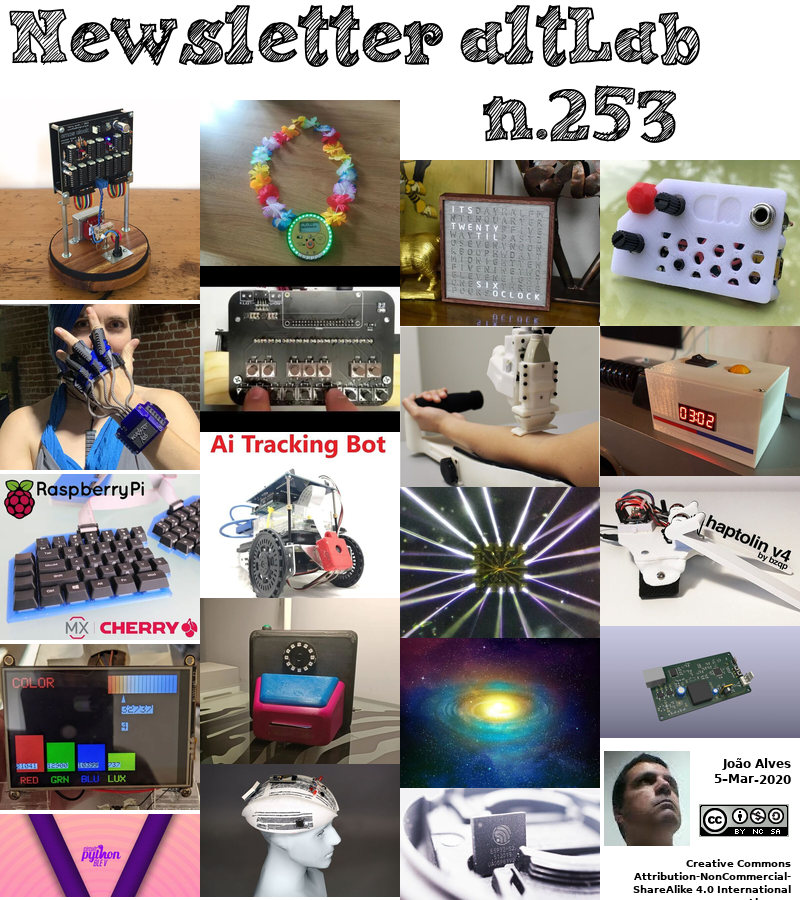2020-03-05 - Nº 253
Editorial
Esta é a Newsletter Nº 253 que se apresenta com o mesmo formato que as anteriores. Se gostar da Newsletter partilhe-a!
Todas as Newsletters encontram-se indexadas no link.
Esta Newsletter tem os seguintes tópicos:
Faz hoje anos que nascia, em 1512, o cartógrafo Gerardus Mercator. Ele ficou conhecido por ter criado um mapa, incorporando o que mais tarde foi conhecido como projecção de Mercator, no qual paralelos e meridianos são renderizados como linhas rectas espaçadas, de modo a produzir a qualquer momento uma proporção exacta de latitude para longitude. Ele também introduziu o termo atlas para uma colecção de mapas.
Faz também hoje anos que nascia, em 1574, o matemático inglês William Oughtred. Ele inventou a forma mais antiga da régua de cálculo, duas escalas logarítmicas lineares ou circulares idênticas mantidas juntas e ajustadas à mão. Melhorias envolvendo a regra interna familiar com a construção linear da lingueta na ranhura vieram mais tarde. Ele introduziu o familiar sinal de multiplicação x num livro de 1631, juntamente com o primeiro uso das abreviaturas sin, cos e tan.
Faz igualmente hoje anos que nascia, em 1817, o físico francês Jacques Babinet. Ele foi o primeiro a propor a definição da unidade de comprimento em termos do comprimento de onda de uma linha espectral. A linha vermelha no espectro de cádmio foi escolhida e o angstrom foi redefinido como uma fracção desse valor. Ele estabeleceu um princípio na teoria da difracção (1837) que recebeu seu nome. O compensador Babinet foi sua invenção para medir a polarização da luz.
Faz também hoje anos que nascia, em 1842, o matemático alemão Heinrich Martin Weber. Ele estabeleceu uma base algébrica para superfícies de Riemann, permitindo uma formulação puramente algébrica do teorema de Riemann-Roch. Os trabalhos de pesquisa de Weber eram numerosos, a maioria deles publicados no Crelle's Journal ou no Mathematische Annalen.
Faz igualmente hoje anos que nascia, em 1876, o engenheiro francês Édouard Belin. Ele foi responsável pela invenção que fez a primeira transmissão telefoto através de fios, de Paris a Lyon e Bordeaux e de volta a Paris. Ele desenvolveu ainda mais o Belinograph, capaz de fazer a primeira transmissão transatlântica de fax por rádio, em 4 de Agosto de 1921, entre Annapolis, Maryland, e os laboratórios de Belin em La Malmaison, França. A sua invenção digitalizou uma imagem num cilindro reflectindo um feixe de luz numa célula fotoeléctrica que convertia diferentes intensidades de luz reflectida em impulsos eléctricos. O seu equipamento foi adoptado na Grã-Bretanha em 1928 e usado quase exclusivamente pelos media europeus nas décadas de 30 a 40, quando o termo "Belino" passou a ser utilizado em geral para todos os tipos de transmissão de imagens.
Por fim, faz hoje anos que nascia, em 1915, o matemático francês Laurent Schwartz. Ele foi pioneiro na teoria das distribuições, que atribui um significado bem definido a objectos como a função delta Dirac. Ele recebeu a Medalha Fields em 1950 pelo seu trabalho na teoria das distribuições.
Esta semana venho falar-vos de um número misterioso que é o 6174. À primeira vista, pode não parecer tão óbvio. Mas, como estamos prestes a ver, qualquer pessoa que possa subtrair pode descobrir o mistério que torna este número tão especial. Em 1949, o matemático D. R. Kaprekar de Devlali, na Índia, concebeu um processo agora conhecido como operação de Kaprekar. Primeiro, escolha um número de quatro dígitos em que os dígitos não sejam todos iguais (que não seja 1111, 2222, ...). Em seguida, reorganize os dígitos para obter os números maiores e menores que esses dígitos podem criar. Por fim, subtraia o menor número do maior para obter um novo número e continue repetindo a operação para cada novo número. É uma operação simples, mas Kaprekar descobriu que isso levou a um resultado surpreendente. Vamos experimentar, começando com o número 2020, os dígitos do ano passado. O número máximo que podemos criar com esses dígitos é 2200 e o mínimo é 0022 ou 22 (se um ou mais dígitos for zero, incorpore-os no lado esquerdo do número mínimo). O resultado é 2178. Agora 8721-1278=7443. Agora 7443-3447=3996. Agora 9963-3699=6264. Agora 6642-2466=4176. Agora 7641-1467=6174. Quando chegamos a 6174, a operação repete-se, dando sempre o resultado 6174 todas as vezes. Chamamos o número 6174 de um kernel desta operação. Então 6174 é um kernel para a operação do Kaprekar, mas isso é tão especial quanto o 6174? Bem, o 6174 não é apenas o único kernel para a operação, mas também tem mais uma surpresa na manga.
Também esta semana pudemos observar uma imagem de alta resolução captada pelo rover Curiosity sobre um panorama da superfície de Marte. Composta por mais de 1.000 imagens tiradas durante o feriado de Acção de Graças de 2019 e cuidadosamente reunidas nos meses seguintes, a composição contém 1,8 mil milhões de pixeis da paisagem marciana. A Mastcam do rover usou a sua lente telefoto para produzir o panorama; enquanto isso, contava com sua lente de ângulo médio para produzir um panorama de baixa resolução e quase 650 milhões de pixels, que inclui o deck do rover e o braço robótico.
Também esta semana cientistas que estudam um aglomerado de galáxias distantes descobriram a maior explosão vista no Universo desde o Big Bang. A explosão veio de um buraco negro supermassivo no centro de uma galáxia a centenas de milhões de anos-luz de distância. Ele libertou cinco vezes mais energia que o registado anteriormente.
Na Newsletter desta semana apresentamos diversos projetos de maker.
 João Alves ([email protected])
João Alves ([email protected])
O conteúdo da Newsletter encontra-se sob a licença  Creative Commons Attribution-NonCommercial-ShareAlike 4.0 International License.
Creative Commons Attribution-NonCommercial-ShareAlike 4.0 International License.
Novidades da Semana

Mysterious number 6174
"The number 6174 is a really mysterious number. At first glance, it might not seem so obvious. But as we are about to see, anyone who can subtract can uncover the mystery that makes 6174 so special. Kaprekar's operation In 1949 the mathematician D. R. Kaprekar from Devlali, India, devised a process now known as Kaprekar's operation. First choose a four digit number where the digits are not all the same (that is not 1111, 2222,...). Then rearrange the digits to get the largest and smallest numbers these digits can make." [...]

NASA's Curiosity Mars Rover Snaps Its Highest-Resolution Panorama Yet
"NASA's Curiosity rover has captured its highest-resolution panorama yet of the Martian surface. Composed of more than 1,000 images taken during the 2019 Thanksgiving holiday and carefully assembled over the ensuing months, the composite contains 1.8 billion pixels of Martian landscape. The rover's Mast Camera, or Mastcam, used its telephoto lens to produce the panorama; meanwhile, it relied on its medium-angle lens to produce a lower-resolution, nearly 650-million-pixel panorama that includes the rover's deck and robotic arm. Both panoramas showcase "Glen Torridon," a region on the side of Mount Sharp that Curiosity is exploring. They were taken between Nov. 24 and Dec. 1, when the mission team was out for the Thanksgiving holiday. Sitting still with few tasks to do while awaiting the team to return and provide its next commands, the rover had a rare chance to image its surroundings from the same vantage point several days in a row." [...]

Astronomers Detect Biggest Explosion In The History Of The Universe
"Scientists studying a distant galaxy cluster have discovered the biggest explosion seen in the Universe since the Big Bang. The blast came from a supermassive black hole at the centre of a galaxy hundreds of millions of light-years away. It released five times more energy than the previous record holder. Professor Melanie Johnston-Hollitt, from the Curtin University node of the International Centre for Radio Astronomy Research, said the event was extraordinarily energetic. “We’ve seen outbursts in the centres of galaxies before but this one is really, really massive,” she said. “And we don’t know why it’s so big." [...]
Outras Notícias

The Goodyear reCharge Concept – Making Tire Changing Easy with Customized Capsules that Renew your Tires
"The Goodyear reCharge is a revolutionary self-regenerating concept tire that can adapt and change to meet individual mobility needs. “Goodyear wants the tire to be an even more powerful contributor to answering consumers’ specific mobility needs, said Mike Rytokoski, Vice-President and Chief Marketing Officer, Goodyear Europe, “It was with that ambition that we set out to create a concept tire primed for the future of personalized and convenient electric mobility.” The reCharge concept includes a number of innovative features that are built around three pillars: Personalized At the core of the reCharge concept is a reloadable and biodegradable tread compound that can be recharged with individual capsules, radically simplifying the process of replacing your tires. Filled with a customized liquid compound, these capsules allow the tread to regenerate and the tire to adapt over time to climatic circumstances, road conditions, or simply how you want to travel. Thanks to artificial intelligence a driver profile would be created around which the liquid compound would be customized, generating a compound blend tailored to each individual. Sustainable The compound itself would be made from a biological material and would be reinforced with fibres inspired by one of the toughest natural materials in the world - spider silk. This would make it both extremely durable and 100 percent biodegradable." [...]

Musicians Algorithmically Generate Every Possible Melody, Release Them to Public Domain
"Two programmer-musicians wrote every possible MIDI melody in existence to a hard drive, copyrighted the whole thing, and then released it all to the public in an attempt to stop musicians from getting sued. Programmer, musician, and copyright attorney Damien Riehl, along with fellow musician/programmer Noah Rubin, sought to stop copyright lawsuits that they believe stifle the creative freedom of artists. Often in copyright cases for song melodies, if the artist being sued for infringement could have possibly had access to the music they're accused of copying—even if it was something they listened to once—they can be accused of "subconsciously" infringing on the original content. One of the most notorious examples of this is Tom Petty's claim that Sam Smith's “Stay With Me” sounded too close to Petty's “I Won’t Back Down." Smith eventually had to give Petty co-writing credits on their own chart-topping song, which entitled Petty to royalties. Defending a case like that in court can cost millions of dollars in legal fees, and the outcome is never assured." [...]

CircuitPython 5.0.0 released
"This is CircuitPython 5.0.0, the latest major revision of CircuitPython, and is a new stable release. 5.0.0 features many improvements and enhancements to displayio, including grayscale OLED and e-paper displays, extensive additions and improvements to BLE support, support for the STM32F4, iMX RT10xx and Sony Spresense microcontroller families, and PWM audio support. Download from circuitpython.org Downloads are available from circuitpython.org! The site makes it easy to select the correct file and language for your board. The downloads page is here. Downloads are no longer available from the GitHub release pages because of the large number of files for each release." [...]

Ampere Altra™ - Industry’s First 80-Core Server Processor Unveiled
"Ampere™ announced today that it has begun shipping the Ampere Altra™ processor, the industry’s first 80-core server CPU and the first cloud native CPU for modern cloud and edge computing data centers. Ampere Altra is the company’s next generation cloud-focused product, and first in a new class of CPUs rolling out on an annual basis from Ampere’s roadmap, that will provide predictable high performance, secure isolation through single-threaded cores, scalability across the entire platform, and new levels of power efficiency. The Ampere Altra processor delivers 80 cores up to 210 W, giving an industry-leading performance boost for rapidly growing use cases such as data analytics, artificial intelligence, database, storage, telco stacks, edge computing, web hosting and cloud native applications. “Ampere Altra is the first of the next generation of server microprocessors that are designed for the workloads of today in the cloud and on the edge. The Ampere Altra is delivering breakthrough performance with the industry’s first 80-core, cloud native microprocessor,” said Renee James, Ampere Founder and CEO. “Since our founding two years ago, Ampere’s highly experienced team has focused on developing products that bring significant and unique innovations to cloud customers." [...]
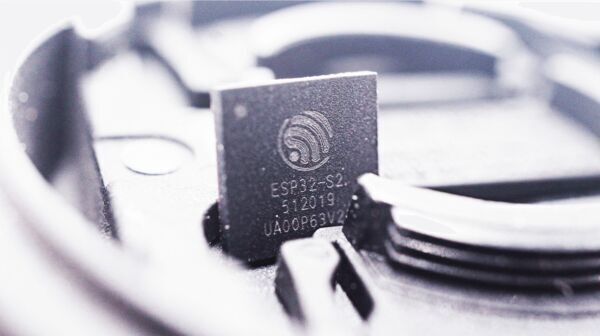
ESP32-S2 SoCs, Modules and Dev Boards Go Into Mass Production
"Espressif announces the beginning of mass production for the whole series of ESP32-S2 SoCs, modules and development boards, which will make their advantages readily available to the entire IoT market. Today Espressif announced that the ESP32-S2 SoC and its related modules (ESP32-S2-WROVER, ESP32-S2-WROOM) and development board (ESP32-S2-Saola-1) have gone into mass production. The ESP32-S series, based on a highly secure Wi-Fi MCU, was launched in 2019, after ESP32 in 2016 and ESP8266 earlier in 2014. This latest series of products have a special focus on the chip's enhanced encryption capabilities, enabling larger eFuse storage. The ESP32-S2 chip is equipped with a 240 MHz Xtensa® 32-bit LX7 single-core processor with 320 KB of SRAM and 128 KB of ROM, as well as a ULP coprocessor based on the RISC-V architecture. With a single-core processor, the ESP32-S2 has lower power consumption, while maintaining excellent processing capabilities." [...]
Ciência e Tecnologia

A new model of vision
"Computer model of face processing could reveal how the brain produces richly detailed visual representations so quickly. When we open our eyes, we immediately see our surroundings in great detail. How the brain is able to form these richly detailed representations of the world so quickly is one of the biggest unsolved puzzles in the study of vision. Scientists who study the brain have tried to replicate this phenomenon using computer models of vision, but so far, leading models only perform much simpler tasks such as picking out an object or a face against a cluttered background. Now, a team led by MIT cognitive scientists has produced a computer model that captures the human visual system’s ability to quickly generate a detailed scene description from an image, and offers some insight into how the brain achieves this. “What we were trying to do in this work is to explain how perception can be so much richer than just attaching semantic labels on parts of an image, and to explore the question of how do we see all of the physical world,” says Josh Tenenbaum, a professor of computational cognitive science and a member of MIT’s Computer Science and Artificial Intelligence Laboratory (CSAIL) and the Center for Brains, Minds, and Machines (CBMM)." [...]

Solving a mystery in 126 dimensions
"One of the fundamental mysteries of chemistry has been solved by Australian scientists - and the result may have implications for future designs of solar cells, organic light-emitting diodes and other next gen technologies. Ever since the 1930s debate has raged inside chemistry circles concerning the fundamental structure of benzene. It is a debate that in recent years has taken on added urgency, because benzene - which comprises six carbon atoms matched with six hydrogen atoms - is the smallest molecule that can be used in the production of opto-electronic materials, which are revolutionising renewable energy and telecommunications tech. It is also a component of DNA, proteins, wood and petroleum. The controversy around the structure of the molecule arises because although it has few atomic components it exists in a state comprising not just four dimensions - like our everyday "big" world - but 126. Measuring a system that complex - and tiny - has until now proved impossible, meaning that the precise behaviour of benzene electrons could not be discovered." [...]

Integrating electronics onto physical prototypes
"In place of flat “breadboards,” 3D-printed CurveBoards enable easier testing of circuit design on electronics products. MIT researchers have invented a way to integrate “breadboards” — flat platforms widely used for electronics prototyping — directly onto physical products. The aim is to provide a faster, easier way to test circuit functions and user interactions with products such as smart devices and flexible electronics. Breadboards are rectangular boards with arrays of pinholes drilled into the surface. Many of the holes have metal connections and contact points between them. Engineers can plug components of electronic systems — from basic circuits to full computer processors — into the pinholes where they want them to connect." [...]

Scientists succeed in measuring electron spin qubit without demolishing it
"A group of scientists from the RIKEN Center for Emergent Matter Science in Japan have succeeded in taking repeated measurements of the spin of an electron in a silicon quantum dot (QD), without changing the spin in the process. This type of “non-demolition” measurement is important for creating quantum computers that are fault tolerant. Quantum computers promise to make it easier to perform certain classes of calculations such as many-body problems, which are extremely difficult and time-consuming for conventional computers. Essentially, the involve measuring a quantum value which is never in a single state like a conventional transistor, but instead exists as a “superimposed state”—in the same way that Schrodinger’s famous cat cannot be said to be alive or dead until it is observed. Using such systems, it is possible to conduct calculations with a qubit that is a superimposition of two values, and then determine statistically what the correct result is. Quantum computers that use single electron spins in silicon QDs are seen as attractive due to their potential scalability and because silicon is already widely used in electronics technology." [...]
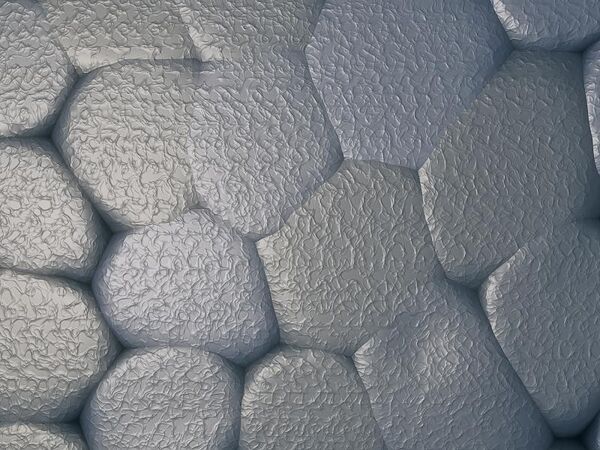
Potassium Metal Battery Emerges as a Rival to Lithium-Ion Technology
"From cell phones, to solar power, to electric cars, humanity is increasingly dependent on batteries. As demand for safe, efficient, and powerful energy storage continues to rise, so too does the call for promising alternatives to rechargeable lithium-ion batteries, which have been the dominant technology in this space. In research published today in Proceedings of the National Academy of Sciences, researchers from Rensselaer Polytechnic Institute demonstrate how they can overcome a persistent challenge known as dendrites to create a metal battery that performs nearly as well as a lithium-ion battery, but relies on potassium — a much more abundant and less expensive element. Batteries contain two electrodes — a cathode on one end and an anode on the other. If you were to look inside a lithium-ion battery you’d typically find a cathode made of lithium cobalt oxide and an anode made of graphite. During charging and discharging, lithium ions flow back and forth between these two electrodes." [...]
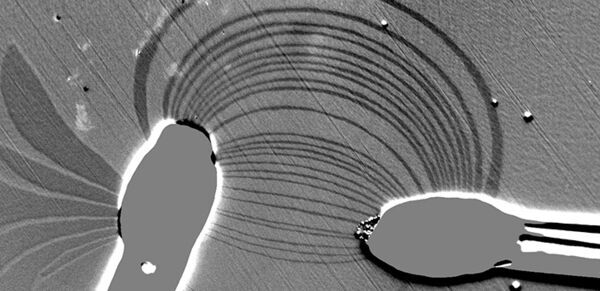
A current map for improving circuit design
"The flow of an electrical current can be imaged directly using magnetic bubbles. A practical method for mapping the flow of a current in devices with complex geometries that could be used to optimize circuit design has been developed at KAUST. A traditional high-school physics experiment is to place iron filings on a piece of paper above a permanent magnet. The small metal particles will arrange themselves into a series of lines connecting the two ends, or poles, of the magnet. This enables students to visualize the otherwise invisible field lines that mediate magnetic attraction and repulsion. Achieving this same type of map for the flow of an electrical current is particularly important in tiny electronic components." [...]

Water splitting observed on the nanometer scale
"New investigation method provides fundamental insights into electrocatalytic water splitting under operating conditions Whether as a fuel or in energy storage: hydrogen is being traded as the energy carrier of the future. To date, existing methodologies have not been able to elucidate how exactly the electrochemical process of water splitting into hydrogen and oxygen takes place at the molecular scale on a catalyst surface. Scientists at the Max Planck Institute for Polymer Research (MPI-P) in Mainz have now developed a new method to investigate such processes "live" on the nanometer scale. The new detailed insights into the splitting of water on gold surfaces could aid the design of energy-efficient electro-catalysts. It is a well-known school experiment: When a voltage is applied between two electrodes inserted in water, molecular hydrogen and oxygen are produced. To further the industrial use of this process, it is indispensable to make water splitting as energy-efficient as possible." [...]
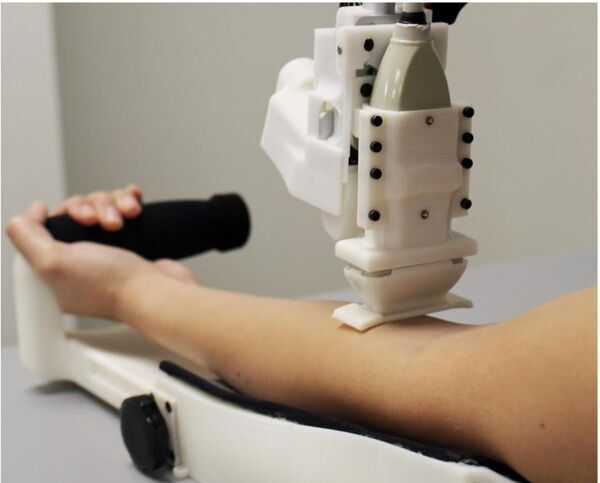
New Robot Does Superior Job Sampling Blood
"First clinical trial of an automated blood drawing and testing device In the future, robots could take blood samples, benefiting patients and healthcare workers alike. A Rutgers-led team has created a blood-sampling robot that performed as well or better than people, according to the first human clinical trial of an automated blood drawing and testing device. The device provides quick results and would allow healthcare professionals to spend more time treating patients in hospitals and other settings. The results, published in the journal Technology, were comparable to or exceeded clinical standards, with an overall success rate of 87% for the 31 participants whose blood was drawn. For the 25 people whose veins were easy to access, the success rate was 97%. The device includes an ultrasound image-guided robot that draws blood from veins." [...]
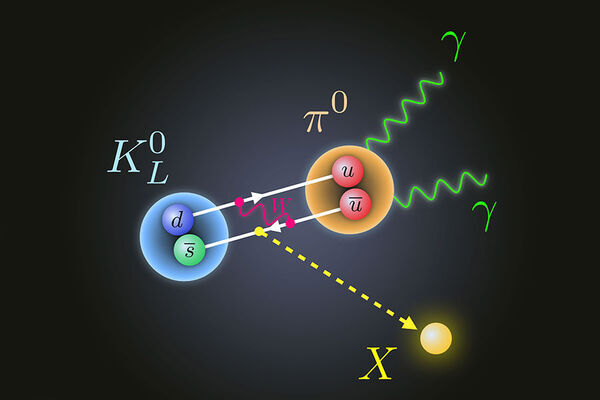
FSU researchers propose new physics to explain decay of subatomic particle
"Florida State University physicists believe they have an answer to unusual incidents of rare decay of a subatomic particle called a Kaon that were reported last year by scientists in the KOTO experiment at the Japan Proton Accelerator Research Complex. FSU Associate Professor of Physics Takemichi Okui and Assistant Professor of Physics Kohsaku Tobioka published a new paper in the journal Physical Review Letters that proposes that this decay is actually a new, short-lived particle that has avoided detection in similar experiments. “This is such a rare disintegration,” Okui said. “It’s so rare, that they should not have seen any. But if this is correct, how do we explain it? We think this is one possibility.” Kaons are particles made of one quark and one antiquark." [...]
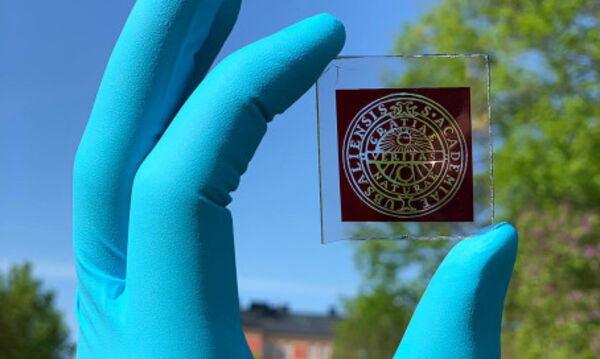
New type of indoor solar cells for smart connected devices
"In a future where most things in our everyday life are connected through the internet, devices and sensors will need to run without wires or batteries. In a new article in Chemical Science, researchers from Uppsala University present a new type of dye-sensitised solar cells that harvest light from indoor lamps. The Internet of Things, or IoT, refers to a network of physical devices and applications connected through the internet. It is estimated that by 2025, many facets of our lives will be mediated through 75 billion IoT devices, a majority of which will be located indoors. Broad installation of such IoT devices requires the devices to become autonomous, meaning that they should no longer need batteries or a grid connection to operate. To achieve this, it is crucial to identify a local low-maintenance energy source that can provide local power to IoT devices, especially in ambient conditions." [...]
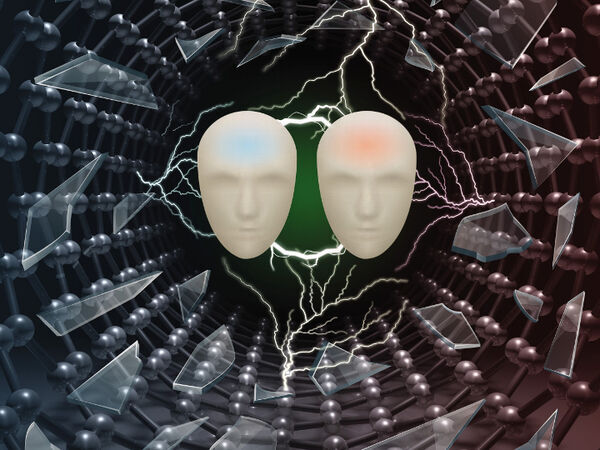
New Material Could Turn Clothing into a Health Monitor
"Researchers are reporting a new material, pliable enough to be woven into fabric but imbued with sensing capabilities that could serve as an early warning system for injury or illness. The material, described in a paper published by ACS Applied Nano Materials, involves the use of carbon nanotubes and is capable of sensing slight changes in body temperature while maintaining a pliable disordered structure – as opposed to a rigid crystalline structure – making it a good candidate for reusable or disposable wearable human body temperature sensors. Changes in body heat change the electrical resistance, alerting someone monitoring that change to the potential need for intervention. “Your body can tell you something is wrong before it becomes obvious,” said Seamus Curran, a physics professor at the University of Houston and co-author on the paper. Possible applications range from detecting dehydration in an ultra-marathoner to the beginnings of a pressure sore in a nursing home patient. The researchers said it is also cost-effective because the raw materials required are used in relatively low concentrations." [...]
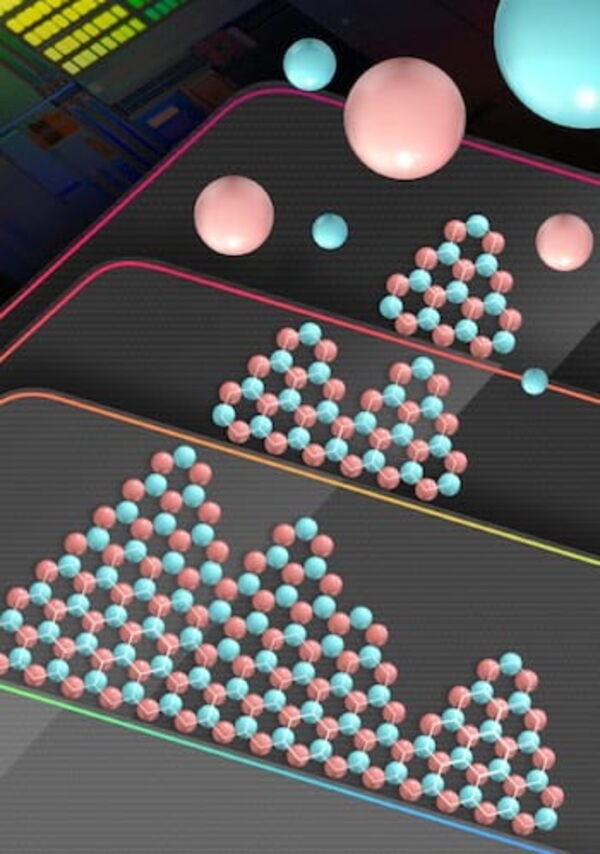
A small step for atoms, a giant leap for microelectronics
"Nature paper reports making and moving large-scale hexagonal boron nitride Step by step, scientists are figuring out new ways to extend Moore’s Law. The latest reveals a path toward integrated circuits with two-dimensional transistors. A Rice University scientist and his collaborators in Taiwan and China reported in Nature today that they have successfully grown atom-thick sheets of hexagonal boron nitride (hBN) as two-inch diameter crystals across a wafer. Surprisingly, they achieved the long-sought goal of making perfectly ordered crystals of hBN, a wide band gap semiconductor, by taking advantage of disorder among the meandering steps on a copper substrate. The random steps keep the hBN in line. Set into chips as a dielectric between layers of nanoscale transistors, wafer-scale hBN would excel in damping electron scattering and trapping that limit the efficiency of an integrated circuit." [...]

Technology provides a new way to probe single molecules
"Precision measurements can aid understanding of disease, infection and vaccines Biology can be murky, and medicine involves dealing with very complex mixtures of molecules. A new technology developed at Northwestern University now offers some clarity to scientists with precision measurements of proteins down to their atoms. The powerful new approach, called individual ion mass spectrometry, or I2MS, can determine the exact mass of a huge range of intact proteins. It weighs each and every molecule on an individual basis. This ability promises to aid the understanding of disease and infection and accelerate the design of vaccines for deadly viruses, such as the coronavirus. Details on this fundamentally new way to weigh single molecules of proteins or their assemblies, such as whole viruses, was published today (March 2) by the journal Nature Methods." [...]

How a New Quantum Approach Can Develop Faster Algorithms to Deduce Complex Networks
"Scientists conduct numerical simulations on complex networks to gain insight into a powerful quantum mechanics-inspired algorithm Complex networks are ubiquitous in the real world, from artificial to purely natural ones, and they exhibit very similar geometric properties. Algorithms based on quantum mechanics perform well on such networks, but their relationship with the geometrical characteristics of networks has remained unclear until now. Researchers from Tokyo University of Science have now shed light on these relationships, opening up new possibilities for the use of complex networks in various fields. Our world has no dearth of complex networks―from cellular networks in biology to intricate web networks in technology. These networks also form the basis of various applications in virtually all fields of science, and to analyze and manipulate these networks, specific "search" algorithms are required. But, conventional search algorithms are slow and, when dealing with large networks, require a long computational time." [...]

Using molecules to draw on quantum materials
"Over millennia, civilizations progressed through the Stone, Bronze, and Iron Ages. Now the time has come for quantum materials to change the way we live, thanks in part to research conducted at the Institut National de la Recherche Scientifique (INRS) and McGill University. Professor Emanuele Orgiu, a researcher at INRS and a specialist in quantum materials. These materials are only a few atoms thick, but have remarkable optical, magnetic, and electrical properties. Professor Orgiu’s research focuses on creating patterns on the surface of quantum materials in order to alter their properties. “The shape of the drawings helps determine the properties imparted upon the surface,” he explains." [...]

They are there and they are gone: ICARUS chases a fourth neutrino
"Argon. It’s all around us. It’s in the air we breathe, incandescent lights we read by and plasma globes many of us played with as children. In liquid form, argon is also an inexpensive and effective target for neutrino physics experiments. On Feb. 21, scientists at Fermilab began cooling down ICARUS – the largest particle detector in the lab’s Short-Baseline Neutrino Program – and filling it with 760 tons of liquid argon, moving ICARUS closer to operation and the search for a fourth type of neutrino. “The Short-Baseline Neutrino Program is amazing because it will finally resolve longstanding anomalous results in neutrino measurements,” said Robert Wilson, deputy spokesperson of ICARUS and professor of physics at Colorado State University." [...]

Scientists shed light on mystery of dark matter
"Scientists have identified a sub-atomic particle that could have formed the “dark matter” in the Universe during the Big Bang. Up to 80% of the Universe could be dark matter, but despite many decades of study, its physical origin has remained an enigma. While it cannot be seen directly, scientists know it exists because of its interaction via gravity with visible matter like stars and planets. Dark matter is composed of particles that do not absorb, reflect or emit light. Now, nuclear physicists at the University of York are putting forward a new candidate for the mysterious matter – a particle they recently discovered called the d-star hexaquark. Bose-Einstein condensate The particle is composed of six quarks – the fundamental particles that usually combine in trios to make up protons and neutrons." [...]
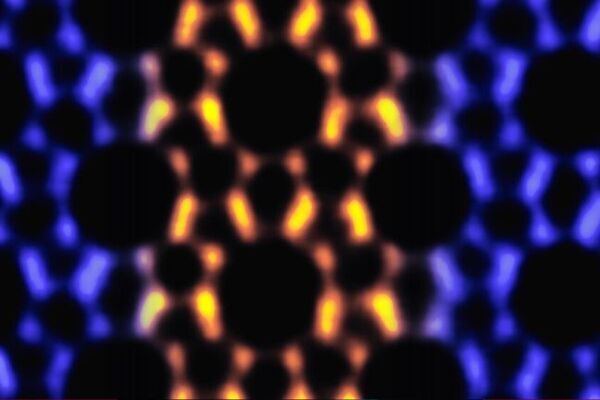
Research Brief: Atomic-scale imaging reveals secret to thin film strength
"An international team of scientists and engineers, led by University of Minnesota Associate Professor K. Andre Mkhoyan and Professor Emeritus Michael Tsapatsis (currently, a Bloomberg Distinguished Professor at Johns Hopkins University), have made a discovery that could further advance the use of ultra-thin zeolite nanosheets, which are used as specialized molecular filters. The discovery could improve efficiency in the production of gasoline, plastics, and biofuels. The breakthrough discovery of one-dimensional defects in a two-dimensional structure of porous material (a zeolite called MFI) was achieved using a powerful high-resolution transmission electron microscopy (TEM) on the University of Minnesota Twin Cities campus. By imaging the atomic structure of the MFI nanosheets at unprecedented detail, the researchers found that these one-dimensional defects resulted in a unique reinforced nanosheet structure that changed the filtration properties of the nanosheet dramatically. The findings are published in Nature Materials, a peer-reviewed scientific journal. “TEM imaging of thin zeolite crystal at the atomic-scale has been a long-standing challenge as these crystals are readily damaged under the high-energy electrons, which are needed for atomic-scale imaging,” said Mkhoyan, an expert in advanced TEM and the Ray D. and Mary T. Johnson/Mayon Plastics Chair in the Department of Chemical Engineering and Materials Science at the University of Minnesota’s College of Science and Engineering." [...]
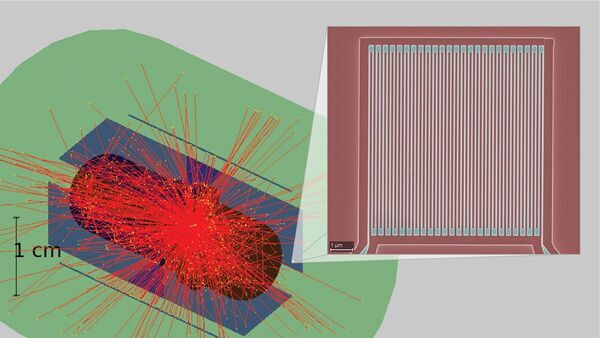
A joint venture at the nanoscale
"When superconductivity material science meets nuclear physics Imagine a wire with a thickness roughly one-hundred thousand times smaller than a human hair and only visible with the world’s most powerful microscopes. They can come in many varieties, including semiconductors, insulators and superconductors. Scientists at the U.S. Department of Energy’s (DOE’s) Argonne National Laboratory report fabricating and testing a superconducting nanowire device applicable to high-speed photon counting for nuclear physics experiments that were previously thought impossible. This device operates at temperatures near to absolute zero in magnetic fields forty times stronger than previous such devices and is able to detect low-energy photons as well as other fundamental particles. “The development of these fast, robust superconducting nanowire devices is an important step toward the implementation of broadband single-photon detection for quantum communication applications.” — physicist Joseph Heremans “This changes the game for the type of particle detector one can design and build,” said Zein-Eddine Meziani, senior physicist in the Physics division. “Think of this as the first unit of something for which we can ultimately connect many of them together in different configurations for use in various nuclear physics experiments.” The key property of this technology is superconductivity." [...]

Manipulating atoms to make better superconductors
"Scientists have been interested in superconductors – materials that transmit electricity without losing energy – for a long time because of their potential for advancing sustainable energy production. However, major advances have been limited because most materials that conduct electricity have to be very cold, anywhere from -425 to -171 degrees Fahrenheit, before they become superconductors. A new study by University of Illinois at Chicago researchers published in the journal Nature Communications shows that it is possible to manipulate individual atoms so that they begin working in a collective pattern that has the potential to become superconducting at higher temperatures. “This successful proof of concept opens unprecedented opportunities to engineer new smart materials, and ultimately, a room-temperature superconductor,” said Dirk Morr, corresponding author and UIC professor of physics in the College of Liberal Arts and Sciences. Morr and his colleagues, including Stanford University’s Hari Manoharan, used a technique known as atomic manipulation, to place single cobalt atoms on a metallic copper surface in a perfectly ordered hexagonal pattern, called a Kondo droplet. “We had theoretically predicted that for certain distances between the cobalt atoms, this nanoscopic system should start to exhibit collective behavior, while for other distances, it should not,” Morr said." [...]

Energy researchers invent error-free catalysts
"A team of researchers from the University of Minnesota, University of Massachusetts Amherst, University of Delaware, and University of California Santa Barbara have invented oscillating catalyst technology that can accelerate chemical reactions without side reactions or chemical errors. The groundbreaking technology can be incorporated into hundreds of industrial chemical technologies to reduce waste by thousands of tons each year while improving the performance and cost-efficiency of materials production. This research is published in Chemical Science, the premiere journal of the Royal Society of Chemistry. In chemical reactions, scientists use what are called catalysts to speed reactions. A chemical reaction occurring on a catalyst surface such as a metal will accelerate faster than undesirable side reactions. When the primary reaction is much faster than every other side reaction, then the catalyst is good at selecting for the most valuable products." [...]
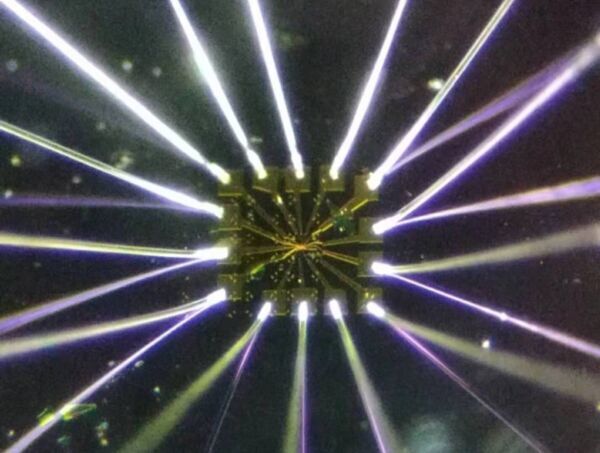
Graphene: A Talented 2D Material Gets a New Gig
"Berkeley Lab scientists tap into graphene’s hidden talent as an electrically tunable superconductor, insulator, and magnetic device for the advancement of quantum information science Ever since graphene’s discovery in 2004, scientists have looked for ways to put this talented, atomically thin 2D material to work. Thinner than a single strand of DNA yet 200 times stronger than steel, graphene is an excellent conductor of electricity and heat, and it can conform to any number of shapes, from an ultrathin 2D sheet, to an electronic circuit. Last year, a team of researchers led by Feng Wang, a faculty scientist in Berkeley Lab’s Materials Sciences Division and a professor of physics at UC Berkeley, developed a multitasking graphene device that switches from a superconductor that efficiently conducts electricity, to an insulator that resists the flow of electric current, and back again to a superconductor. Now, as reported in Nature today, the researchers have tapped into their graphene system’s talent for juggling not just two properties, but three: superconducting, insulating, and a type of magnetism called ferromagnetism. The multitasking device could make possible new physics experiments, such as research in the pursuit of an electric circuit for faster, next-generation electronics like quantum computing technologies. “So far, materials simultaneously showing superconducting, insulating, and magnetic properties have been very rare." [...]

Bendable, safe, long-lasting and green cement-free concrete developed at Swinburne
"A new type of concrete that is made out of waste materials and can bend under load has been developed and patented by Swinburne researchers Dr Behzad Nematollahi and Professor Jay Sanjayan. This material incorporates industrial waste products such as fly ash – a by-product of coal-fired power stations. It is especially suited for construction in earthquake zones where the brittle nature of conventional concrete often leads to disastrous building collapses. “Concrete is the most widely used construction material in the world,” says ARC DECRA Fellow at Swinburne's Centre for Smart Infrastructure and Digital Construction, Dr Nematollahi. “In fact, it is the second-most consumed material by human beings after water. Its quality has a massive effect on the resilience of our infrastructure such as buildings, bridges and tunnels.” Traditional concrete is not only prone to shatter when being stretched or bent, but also has a huge carbon footprint due to calcination of limestone to produce its key ingredient, cement." [...]

Enhanced tandem solar cells set new standard in converting light into electricity
"Researchers from U of T Engineering and King Abdullah University of Science and Technology (KAUST) have overcome a key obstacle in combining the emerging solar-harvesting technology of perovskites with the commercial gold standard — silicon solar cells. The result is a highly efficient and stable tandem solar cell, one of the best-performing reported to date. “Today, silicon solar cells are more efficient and less costly than ever before,” says Professor Ted Sargent (ECE), senior author on a new paper published today in Science. “But there are limits to how efficient silicon can be on its own. We’re focused on overcoming these limits using a tandem (two-layer) approach.” Like silicon, perovskite crystals can absorb solar energy to excite electrons that can be channeled into a circuit. But unlike silicon, perovskites can be mixed with liquid to create a ‘solar ink’ that can be printed on surfaces." [...]

Quantum researchers able to split one photon into three
"Researchers from the Institute for Quantum Computing (IQC) at the University of Waterloo report the first occurrence of directly splitting one photon into three. The occurrence, the first of its kind, used the spontaneous parametric down-conversion method (SPDC) in quantum optics and created what quantum optics researchers call a non-Gaussian state of light. A non-Gaussian state of light is considered a critical ingredient to gain a quantum advantage. “It was understood that there were limits to the type of entanglement generated with the two-photon version, but these results form the basis of an exciting new paradigm of three-photon quantum optics,” said Chris Wilson, a principal investigator at IQC faculty member and a professor of Electrical and Computer Engineering at Waterloo. “Given that this research brings us past the known ability to split one photon into two entangled daughter photons, we’re optimistic that we’ve opened up a new area of exploration.” “The two-photon version has been a workhorse for quantum research for over 30 years,” said Wilson. “We think three photons will overcome the limits and will encourage further theoretical research and experimental applications and hopefully the development of optical quantum computing using superconducting units.” Wilson used microwave photons to stretch the known limits of SPDC." [...]
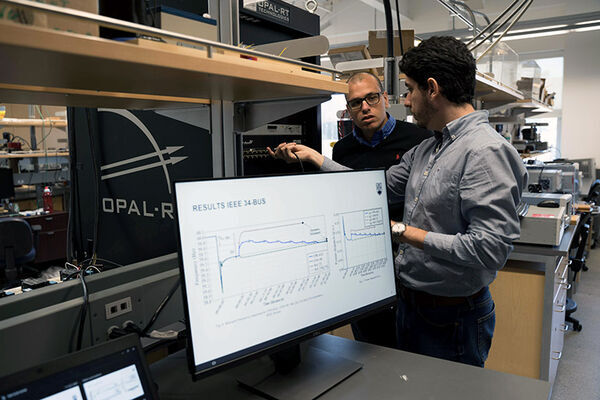
Say goodbye to power outages, says UBC Okanagan engineer
"Researchers shine a light on ways to keep the energy flowing With the goal of eliminating brownouts and blackouts, new research from UBC’s Okanagan School of Engineering is redesigning how electricity is distributed within power grids. The research describes a power system operation that will consist of multiple microgrids—separate grids operating like individual islands that can disconnect from the main power supply and run independently. These islanded systems will provide electricity to smaller geographical areas, such as cities and large neighbourhoods. In the case of a failure in the main system, the local grid operation system will keep the lights on. “The microgrid will recognize the problem in the main power system and will isolate itself, avoiding previously inevitable power outages,” explains Yuri Rodrigues, a UBCO electrical engineering doctoral student and study co-author. He explains, however, that a continued supply of power in this mode will depend on locally available generating reserves." [...]
Projetos Maker
Diversos Projetos interessantes.
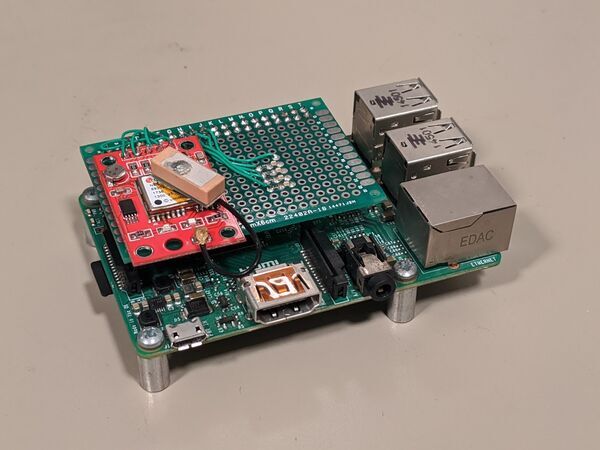
Building a Raspberry PI Stratum 1 NTP Server
"After the nice reception my last article on NTP got, I decided that it was about time I pulled a project off the shelf from a few years ago and get a stratum 1 NTP server running on a Raspberry Pi again. So this article is going to be my notes on how I built one using a cheap GPS module off eBay as the reference time source and a Raspberry Pi. (a 2B in this case, but hopefully the differences for newer models will be minor; if there are any, they're probably around the behavior of the serial port since I think things changed on the Pi3 with bluetooth support?) So anyways, before we jump into it, let's spend some time talking about why you would and wouldn't want to do this: Pro: NTP is awesome, and this lets you get a stratum 1 time server on your local network for much lower cost that traditional COTS NTP time standards, which tend to be in the thousands of dollars price range. Con: This is a Raspberry Pi, booting off an SD card, with a loose PCB plugged into the top of it, so I wouldn't classify it as "a robust appliance". It isn't a packaged enterprise grade product, so I wouldn't rely on this NTP server on its own for anything too critical, but then again, I would say that about NTP in general; it's only meant to get clocks to within "pretty close" of real time." [...]

Nixie Tube Audio Meter
"Nixie Tubes are an antiquated neon-based display technology dating back to the mid-1950s. They predate both LEDs and LCDs, which are both cheaper and simpler to operate. However, LEDs and LCDs both struggle to match the otherworldly aesthetic of these glowing glass tubes. Back in high school I built a clock using Nixie Tubes. It was of a very primitive construction: plenty of hand-wiring, protoboard, and self-etched PCBs. Remarkably, it worked great!" [...]
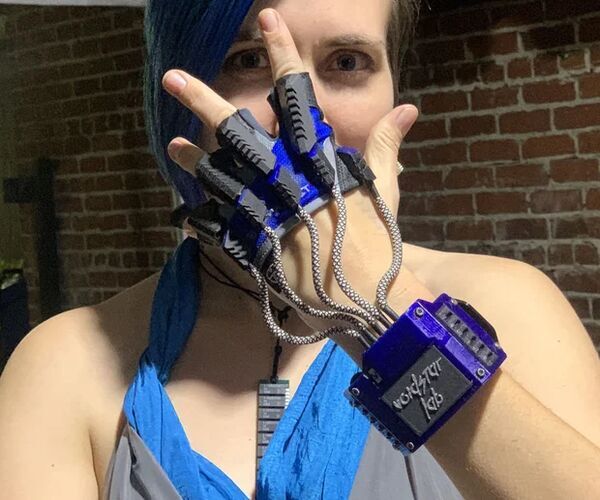
Somatic - Data Glove for the Real World
"The Somatic is a wearable keyboard and mouse that's comfortable, unobstructive, and ready for all-day wear. It's loaded with all the hardware to translate hand signs and motions into actions, like the somatic component of a spell in Dungeons and Dragons. For the most up-to-date design files, code, and utilities, visit the project page on GitHub. Each knuckle has a Hall sensor, and the first segment of each finger has a magnet. Flexing a finger pivots its magnet out of position, allowing the Somatic to map your hand. An EM7180SFP IMU near the thumb provides 9-degree tracking." [...]
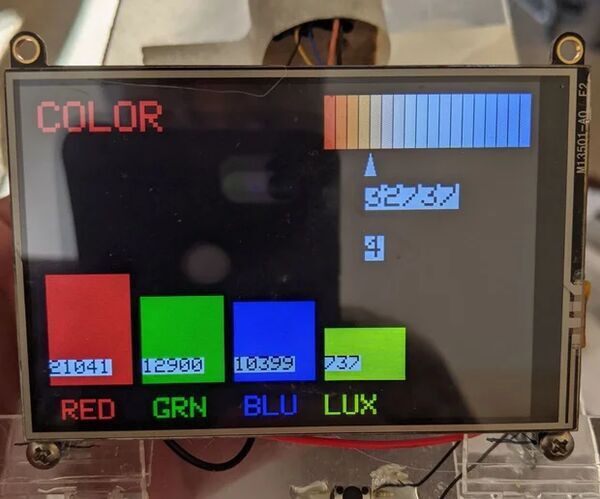
Blue Light Project Part2
"So in Blue Light Project Part1 I explained some of the steps I took to reduce insomnia by reducing evening blue light. I didn’t have an easy way of seeing how well it worked, so I decided to build a Color meter to measure how much blue light I was getting. DISCLAIMER: These are my opinions only! So this Lazy Old Geek (L.O.G.) decided to use a TCS34725 (see picture) color sensor. It can measure the Red, Green and Blue components of light and also white." [...]

Raspberry Pi - Autonomous Mars Rover With OpenCV Object Tracking
"Powered by a Raspberry Pi 3, Open CV object recognition, Ultrasonic sensors and geared DC motors. This rover can track any object it is trained for and move on any terrain. In this Instructables, we are going to build an Autonomous Mars Rover which can recognize objects and track them using the Open CV software running on a Raspberry Pi 3 with an option to use a webcam device or the original raspberry pi camera. It is also equipped with an Ultrasonic sensor mounted on a servo to track its way in dark environments where camera wouldn't work. Signals received from Pi are sent to the motor driver IC (L293D) which drives 4 x 150RPM DC motors mounted on a body built with PVC pipes. Materials Required Raspberry Pi (Any but zero) Raspberry PI Camera or a webcam L293D motor driver IC Robot Wheels (7x4cm) X 4 Geared DC Motors (150RPM) X 4 PVC pipes for chassis Software required Putty for SSH ing the Pi Open CV for object recognition" [...]
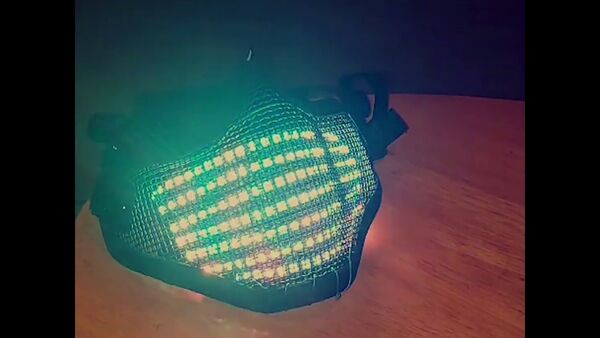
How To Create A LED Rave Mask Using Arduino, NeoPixels, and C++
"In this guide, we will cover how you can create the hardware and software for an Arduino LED rave mask. Feel free to refer to the GitHub repository for this Arduino project. The mask itself consists of 7 rows of WS2182B 144 LEDs/m NeoPixels. There are a total of 161 LEDs, with the first row being 26. Each row decrements by 1, which means the 7th row will have 19 NeoPixels. Since we are decrementing by an odd number, we will line up the pixels to be in-between the two pixels above it." [...]
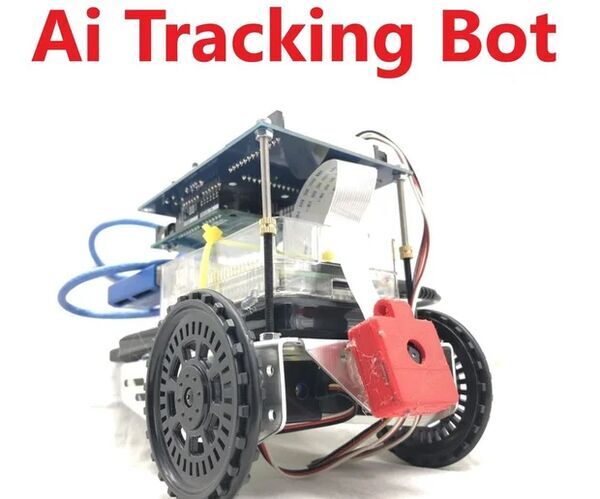
MyPetBot (A Bot That Follows You)
"Ai is one of the most beautiful application of mathematics. It's basically a bunch of matrices operations optimized to match the result you are looking for. Luckily there are tons of open source tool that allow us to make use of it. I originally had the idea long time ago when I was working on a waterfall de-activated by the people passing throw. I was using ultrasound sensors and discovered too late that they don't work greatly when they are wet... That was not a fun experience. We ended up using a big button that people would press if they wanted to pass." [...]

FotoFish
"FotoFish is a polaroid camera project, which uses a repurposed thermal printer to print the taken photograph instantly. It is created by the team at the OPENFAB, a Open Fabrication Lab at zyein University in Istanbul, Turkey. The purpose of this project was to create a fun way for people to record their visits to OPENFAB. Supplies: Raspberry Pi Raspberry Pi Camera 12V Lithium Ion Battery with BMS (Battery Management System) LM2596 Voltage Regulator Board Thermal Receipt Printer and its Paper Short M10 Rod 12 Led Neopixel Ring Shutter Button Power Switch Power Supply Jack 12V Adapter" [...]
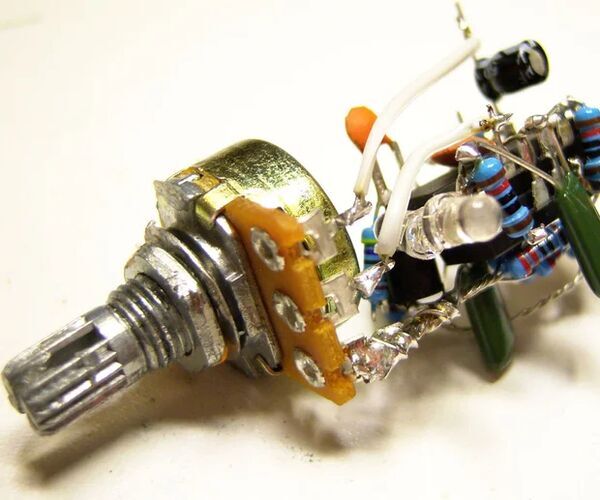
MS-20 Voltage Controlled Filter for Cheap
"What you need: All the parts for this build A clean, well-lit working surface Your soldering iron Nice solder Pliers, wire strippers, tweezers, whatever A large hunk of poster putty to hold your work in place This Instructable! Remember, youll need a bipolar power supply to run this circuit. Mounting it to a panel and in an enclosure is up to you. If you want to see how I do it, in tin cans, check out my video about that on Youtube. Search for ozerik -- thats me. This project is based on a lightly modified version of Ren Schmitz' version of the very well-regarded Korg MS-20 VCF." [...]
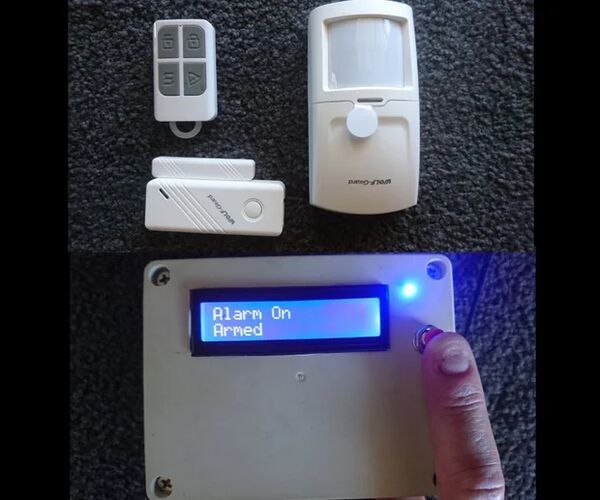
Arduino Wireless Alarm System Using Existing Sensors
"This project can be built in about half an hour at a cost of about $20.00 if you have existing 433Mhz or 315Mhz wireless alarm sensors. It can also be a complete new project with wireless alarm sensors, such as infrared motion detectors and reed switches, easily and cheaply available online. Just search for 433Mhz or 315Mhz sensors that use PT2262 or EV1527 coding. I am sure there are many people like me who have purchased a GSM/2G alarm system with wireless sensors and were happy with it, however when the 2G/GSM network was turned off where I live, I was left with an alarm system I could no longer program or even set the time on it. One day while wondering what I could do to make my alarm functional again, it occurred to me to check if an Arduino could receive signals from the sensors. I stumbled across an instuctable https://www.instructables.com/id/Decoding-and-sending-433MHz-RF-codes-with-Arduino-/ and after some experimenting determined that I could receive the signals from my existing sensors." [...]
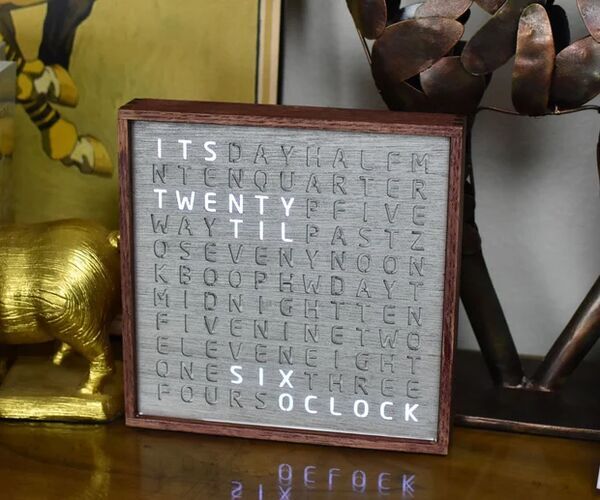
Word Clock
"Another take on the popular word clock. Powered by an arduino clone and WS2812B LEDs, the design was inspired first by this example, then I rewrote the firmware incorporating some ideas from this instructable using the fastled library. My goals for this design were to have: Largest/closest possible letters without light bleed between them Control over individual letters rather than one word at a time Suitable for hanging on a wall or sitting on a table User-friendly controls Impression of quality Laser cuttableI tried to minimize common DIY telltales like the surface finish of a 3D printed object or the burn marks/finger joints/living hinges of a laser cut project. I appreciate when someone asks me where I bought something that I designed and built myself. I may make the laser cut parts available from time to time here on Etsy. The main requirement for this design is access to a laser cutter that has a cutting area of 9" x 9" or greater." [...]
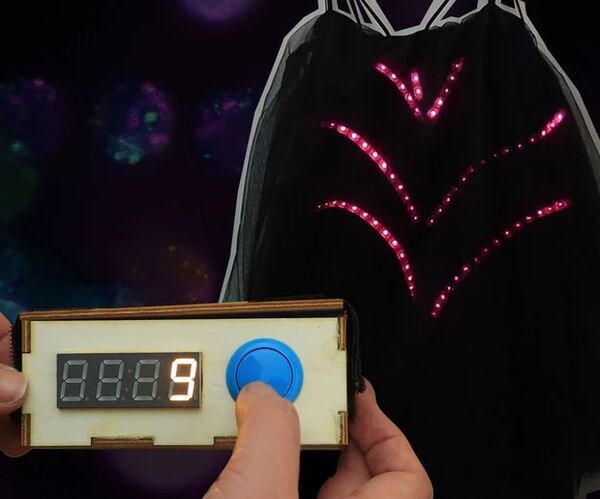
Led Shirt With Button to Change Modes - Arduino, Neopixels, FastLED
"What This is a step-by-step tutorial on how to take a regular shirt and use LEDs and arduino to turn it into a light up shirt (undoubtedly much better than a regular shirt. )You could totally use the same steps with a hat, skirt, bag, etc - anything you want to cover in LEDs.~~A full build video will be added by Friday 6th March~~ Why This shirt is perfect for:Festivals! Raves!Tuesdays evenings!Any time you want to make a good impression, e.g. job interviews! How I took an existing shirt and added LEDs to it, rather then starting from scratch and making the shirt itself. This gave me a solid base to work from and allowed me to focus on the light-up-ness rather than learning how to make clothes." [...]

EM-Tronic 2020 Mini Synth
"This is the EmTronic mini synth, it's a super simple Arduino powered noise maker that I have designed to be easy to build and only requires easy to buy parts. This little synth allows you to control frequency, modulation and the waveform of the sound. The Arduino sketch uses the awesome the_synth library from DZLOnline. The 3d printed front panel finishes off the mini synth but you don't need it to make the sounds. You could even build it on a breadboard if that works for you. Best of all once you're done it's time to experiment with your own mods to the software to make new crazy sounds and mods to the front panel to really get the look you want." [...]
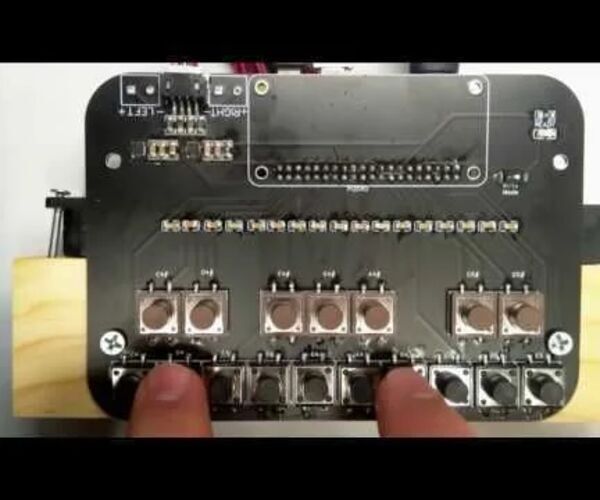
PiPiano
"Synthesize your own little Raspberry Pi piano. Uses FluidSynth SoundFont synthesizer. Features polyphony and sustain, meaning you could push all of the notes at once and the note will play longer with the button held down. Schematic and PCB are are shared on EasyEDA. Designs and python code are all open. Customize it your way!" [...]
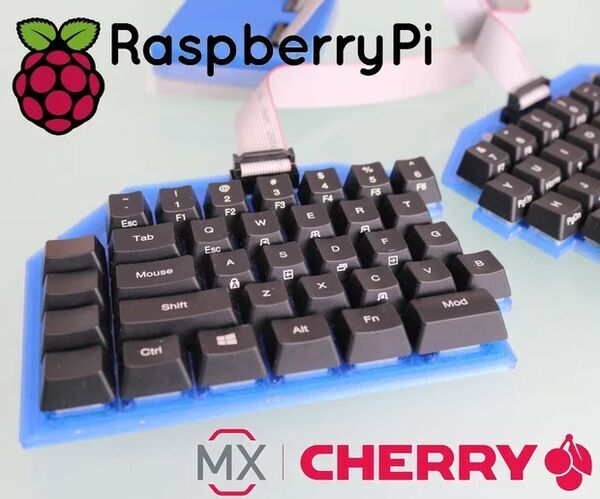
Cherry Pi Split Mechanical Keyboard
"I've used a Microsoft Natural Elite keyboard for years. And after almost 20 years of loyal service, it's at the end of its lifespan. During my search for a replacement, I also looked at different mechanical keyboards. And because I regularly do DIY projects, I thought it would be a great experience to make such a keyboard myself. This is my the first mechanical keyboard project. And this will be for daily usage." [...]
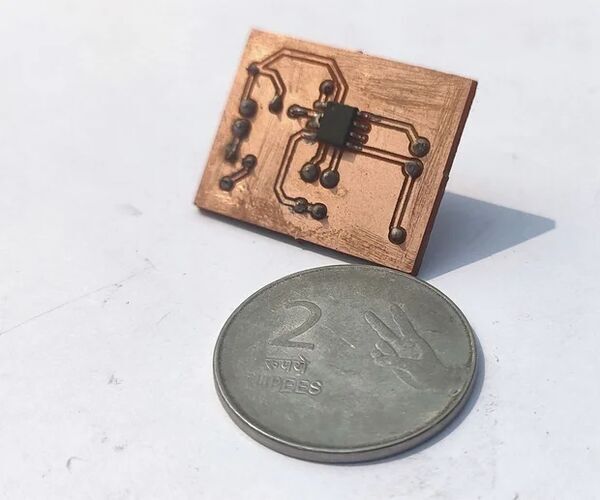
Powerful 3 Watts Mini Audio Amp!
"Hello everyone! Welcome to my instructable where in this tutorial i will show you how I made this small but powerful 1 watt audio amplifier which is very easy to make,requires very few external components and packs in a whole lot of power for the size of it! So let's get started! Supplies: IC 8002 audio power amplifier IC 10k resistors - 2 22k resistor - 1 0.1uF ceramic capacitor - 2 Male header pins Veroboard or protoboard (or custom made PCB for this project which I have discussed later in this tutorial) 5V power supply (mobile phone chargers work just fine) 4 Ohm impedance speaker 3.5 mm headphone jack (for audio source to be easily plugged in) Soldering kit,multi-meter and accessories. " [...]

Breathalyzer Medallion
"We all have a special friend who needs supervision on a night out. Mine is called Geoffrey, and on his stag weekend it seemed prudent to have an outward display of how much of a liability he was likely to be. This instructable outlines the construction of a medallion which contains a breathalyzer with a progress bar around the edge and an e-ink display in the middle. It is based on arduino code and uses an ESP32 board which is compatible with the arduino IDE. Supplies: You will need Access to a 3D printer Access to a laser cutter Metalized laser cut material Small lipo battery Alcohol sensor - MQ3 or MQ4 breakout board [About £1 on eBay] E-ink display [waveshare 2.13" SPI module ~ £15 from banggood] ESP32 dev board with lipo charger [I used a lolin32 but adafruit now make the huzzah range which is very nice] Neopixel compatible ring [32 pixels is the right size if you want to use the attached CAD] Slide power switch [I used RS 829-0611] Decorations" [...]

Smart Tea Machine Using Bolt IoT
"A Smart Tea Machine Using Bolt IoT with Real-time Payment integration(UPI). The Smart Tea Machine is a simple demonstration of how Unified Payments Interface (UPI) can be integrated with devices especially devices like Bolt IoT, Raspberry Pi, etc. It shows the relative ease and simple code that can be used to have basic functionality in a standard machine without display. The main idea of this project is to make a machine that can be used with the Indian payment system. The Existing old tea machine is used to prove the concept. A standard old tea machine has been modified to be controlled by a Bolt IoT WiFi Module with a 5v Relay." [...]
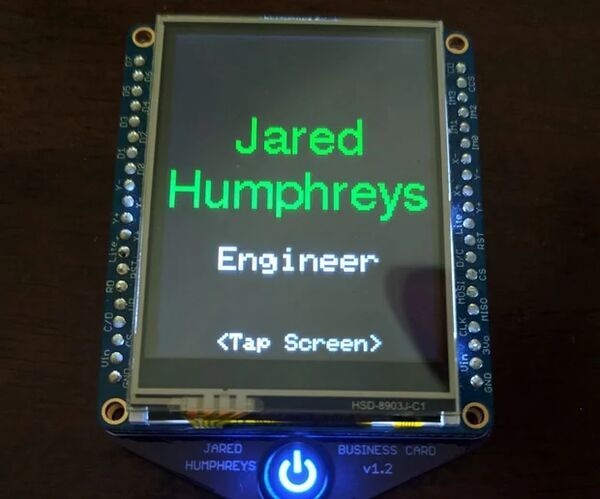
Touch Screen Business Card
"I am a Mechanical Engineer by degree, but I have also developed skills in Electrical Engineering and programming from years of projects involving circuitry and microcontrollers. Since employers will expect that I have skills in Mechanical Engineering due to my degree, I decided to make a business card that would showcase my EE and programming skills. I considered a range of options, from a custom-designed PCB with my name and contact info on it and a few useful reference tables, to a PCB with that and a little LED flashlight circuit on it, but ultimately I went with the most elaborate option I was considering, which was a business card with an Arduino and a touch screen on it that would let someone scroll through various information about me. It is admittedly highly elaborate and costly for a business card, but of the possible designs I considered is is easily the coolest and was also the most fun to design and make. Components: MicroSD card (optional, I loaded my resume and portfolio onto a MicroSD card inserted into the LCD screen) Custom carrier board Header pins Adafruit Touch Screen (P/N 2478) Adafruit Pro Trinket 3.3V (P/N 2010) Adafruit Push Button Power Control Board (P/N 1400) Adafruit Li-Ion/Li-Poly Backpack Board (P/N 2124) Adafruit 150 mAh LiPo battery (P/N 1317) Adafruit Momentary Push Button (P/N 3105) 2X Resistor 1.2K Ohm SMT 0805 1X Resistor 220 Ohm SMT 0805 Materials/Tools: Diagonal flush cutters Wire strippers MicroUSB cable 99% isopropyl alcohol Silicone conformal coating Solder paste Brushes Hot air rework station Soldering iron" [...]
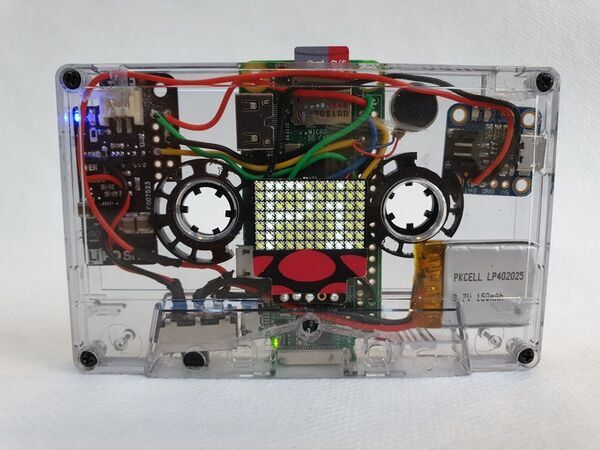
Cassette Pi IoT Scroller
"The Cassette Pi is a self-contained real-time notification scroller, all housed neatly inside a transparent cassette tape. A Raspberry Pi Zero is sandwiched between the two tape reels, retrieving all manner of Internet of Things notifications from the fabulous IFTTT (If This, Then That) service, delivered almost instantly to the Pi via an Adafruit.IO feed and a Python script. The whole cassette vibrates to alert you to the incoming notification, and the text is then scrolled clearly across a Pimoroni 11x7 LED display. Everything is powered by a 150mAh LiPo battery, connected to the Pi via a LiPo Shim - also within the cassette is an Adafruit Micro Lipo so when the battery runs low it can be plugged directly into a Micro USB power source to grab some juice. The most fun part is that thanks to some trimming of the Pi itself, the cassette can still fit inside any vintage tape player, turning that old ornament into a functional and classy Internet of Things device. The Cassette Pi is perfect for use as a conference badge too, dangling from a lanyard and scrolling your name or a custom message." [...]
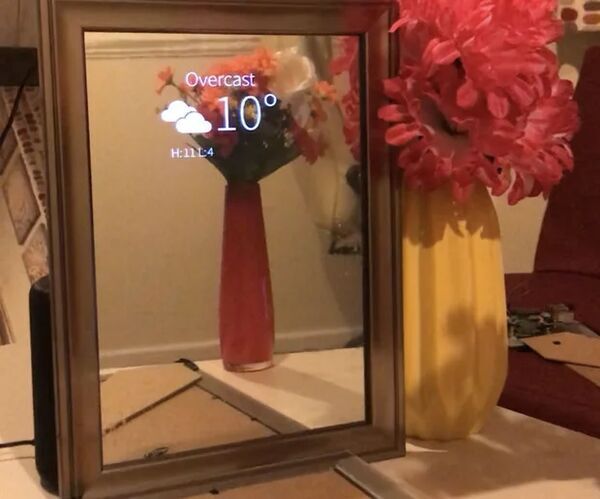
Simple Smart Mirror
"Wow! its been quite a longtime i uploaded something, been busy working on so many stuffs and realised i have to drop something for my followers as the sayings goes, 'always have a project to work on' haha perhaps that's just me, anyway back to business!! Ever been amazed by seeing 'magic mirrors' or smart mirrors and wish you could build yours? or have you tried the steps by others and still encounter new problems and got stuck and gave up? you not alone, i have too and have been able to find simple ways to make it much simpler avoiding some unnecessary download of stuffs you don't need really! together after we build our first one, come with me lets go on a journey to build a touchscreen smart mirror the size of 15.6" laptop display or 32 inch TV with icons and hope this journey will be worth it for newbies and those looking for excitement!!!!" [...]
PixPoE: Putting Plenty of Pixels Wherever You Can Plumb Some Cat5!
"I love to work on lighting projects, and having done my fair share of NeoPixel/WS2812b-based installations, I can tell you from experience that sometimes it can be really tricky nailing down a fully comprehensive design that "just works" when it's deployed. One of the things that I see most often overlooked when integrating pixels of any chipset into staging, decor or other applications is the attention needed to properly route the required data and power wiring to where it's needed. Batteries and Bluetooth don't cut it for large scale installations, and conversely, the wiring needed to support multiple pixel groups can quickly become cumbersome and expensive when you consider the high power requirements of lighting. With this in mind, we can appreciate the PixPoE project from Glen Akins, a professionally designed hardware project aimed at simplifying the installation of pixel-based lighting projects! Networked pixel controllers are a popular project, but I'm going to take a look at what really makes the PixPoE such an interesting design for me It's integrated PoE power supply, something I've often been found wishing for! " [...]
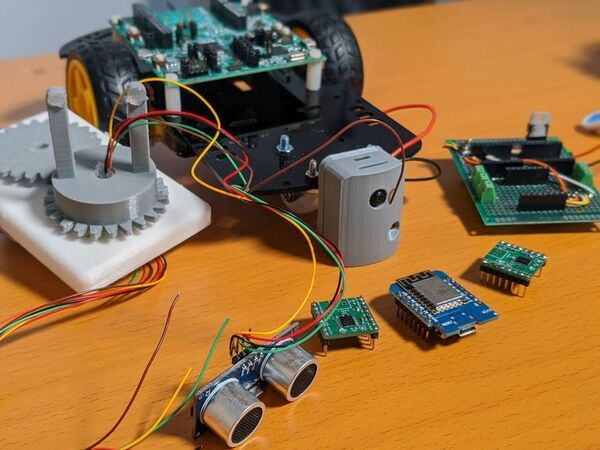
Multi-Purpose Rover Platform With Internet Control
"An example rover platform that can be controlled over the internet & which can be used for 2D mapping & motion control applications. The idea behind the crossover challenge was to write code for the i.MX RT1010 evaluation board and that is the reason why I decided to create an example rover platform that interfaces a couple of peripherals. The rover maps the surroundings by using an ultrasonic sensor and sends this information over the internet to an APP. This can then be used to create a 2D map of the area in question. The rover can also be controlled remotely over the internet and it also provides a live video feed. " [...]
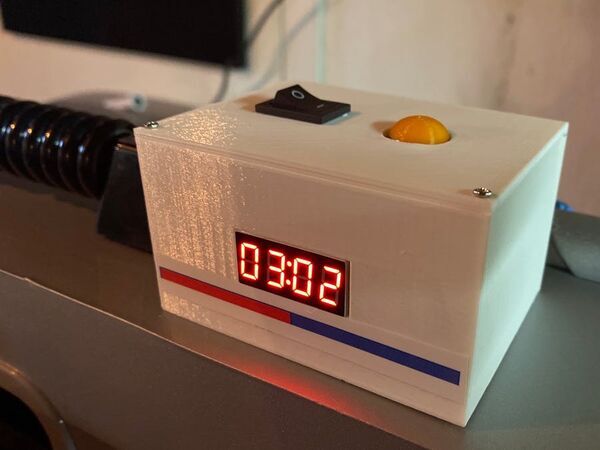
Rechargeable Digital Foosball Scoreboard Using ESP8266
"Imagine a digital scoreboard which is updated automatically when the ball enters the goal and play a beep sound! Since we bought a foosball table, I have been thinking about digital score board which will be automatically updated when a goal is scored rather than manually moving those rings. While doing a research on available sensors in the market, I came across with IR Beam sensor which fits perfect for this use case. This comes with two parts - a sender and a receiver. Whenever there is something in between them, circuit is opened. This is very accurate in my opinion even if the obstacle is just a fraction of seconds." [...]
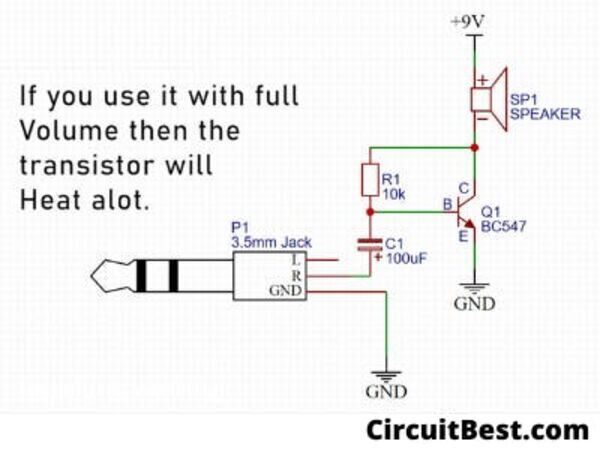
Simple Basic audio amplifier with BC547 Amplifier
"In this article, we are getting to discuss an easy amplifier circuit with a BC547 transistor. Here you'll find the complete schematics and other more information. So thereupon being said let's start our article. How does the essential amplifier Circuit work? This circuit works on the essential principles of the NPN transistors. The low amplitude Audio signal goes into the bottom of the transistor." [...]
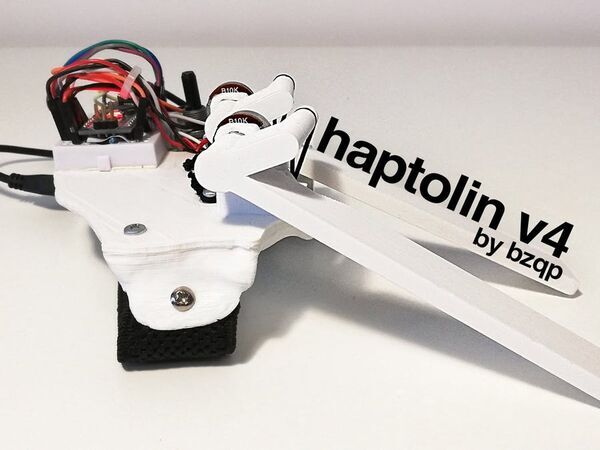
Haptolin
"My microtonal Arduino MIDI instrument! Haptolin is my Arduino-based, microtonal instrument/MIDI controller. The project is mainly inspired by: Theremin Modulin Haptx Glove Power Glove Haptolin produces a theremin-like sound while providing an analog haptic feedback allowing for a precise pitch control. Whereas Haptx glove relies on complex, actuator-based feedback system, haptolin uses simple braided elastic bands. The higher the pitch the stronger the response. The left key controls the pitch, the right one controls the dynamics." [...]

Scan QR Codes in Real-Time with Raspberry Pi
"Use a webcam and a Raspberry Pi 4 to extract information from QR codes and even make your own with Python How QR Codes Work Quick-reference (QR) codes are similar to barcodes, as they are able to encode data that is represented by black and white squares. But instead of using a laser, a camera differentiates between the spaces and then sends that information to be processed. They are comprised of several large squares that help to align and position the edges of the QR code, formatting columns, a version number, and finally, the data itself. The data they contain can encode a variety of types, including numbers, characters, and binary, which can allow for many creative uses. Advertisers often encode URLs in them that redirect the user to their website. Other companies might place important product information in a QR code, such as a serial number, and attach it to a component." [...]

Water Waste Monitor
"Millions of gallons of water are wasted every year. Learn to conserve water with this project! Water waste is a big problem, a 1 trillion gallon problem. One way we can combat this is to monitor leaky facuets and also conserve on the daily water use. To accomplish this task, we can use some Seeed sensors and a Arduino that will obnoxiously alarm us when we are wasting water. " [...]

CMOS Clock
"Introduction I’ve recently become interested in clock projects, and it seemed appropriate to start by building the essential digital clock assembled from logic chips. Although clock projects exactly like this have been around for the best part of 50 years at this point, I wanted to work it all out for myself, so I had a good read through Don Lancaster’s CMOS Cookbook for inspiration. Hardware The timebase is a typical 32.768kHz watch crystal, divided down to 1Hz using a 4060 counter into a 4013 flip-flop. It’s not the most accurate timebase, but it’s good enough. I thought about going the other route and deriving the timebase from the mains line frequency, but decided against it as I would like to be able to run the clock from a DC power source should I ever want to, rather than being tied to using an AC transformer (on a 50Hz supply as well). This 1Hz clock signal goes into a chain of 4029 counters, to count the seconds, minutes and hours; each counting the 1s and 10s separately." [...]

LED Distance Indicator Dog Harness
"I usually take my dog Rusio for a walk when the sun goes down so he can play without getting too hot. The problem is that when he's off the leash sometimes he gets too excited and runs further than he should and with the low light and the other dogs it's not easy to spot him right away. To solve this I had the idea of making a dog harness that will glow red when he goes to far from me, as an added requirement I wanted to make it without using any microcontroller or programming to make it as accessible as posible for other makers. Supplies: cheapest pair of walkie talkies you can find 2x 555 ICs 1x 2n2222A transistor 2x TIP120 transistor 7x 1Kohm 1/4W resistor 1x 5.6Kohm 1/4W resistor 1x 6.5 ohm 1/4W resistor 2x 220ohm 1/2W resistor 1x 470nF 10V capacitor 1x 10nF 10V capacitor 3x general use diodes (I used 1n4004) LEDs of your color preference" [...]
That's all Folks!



